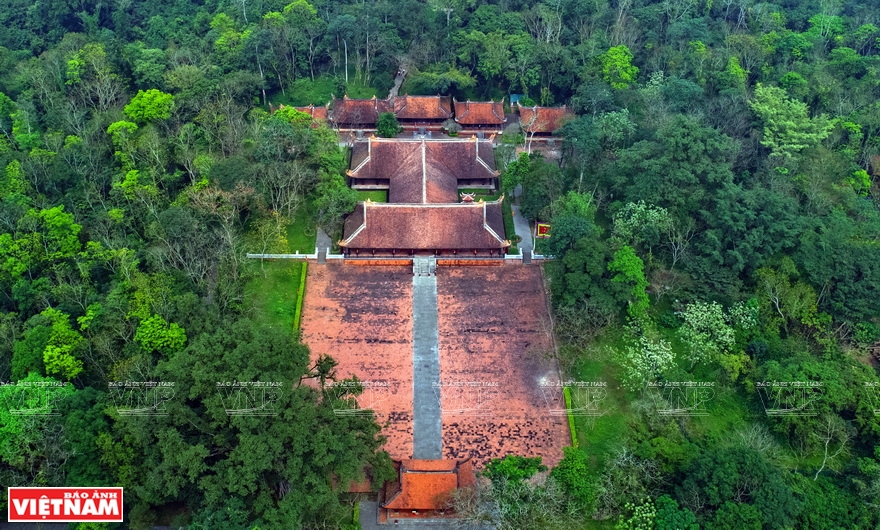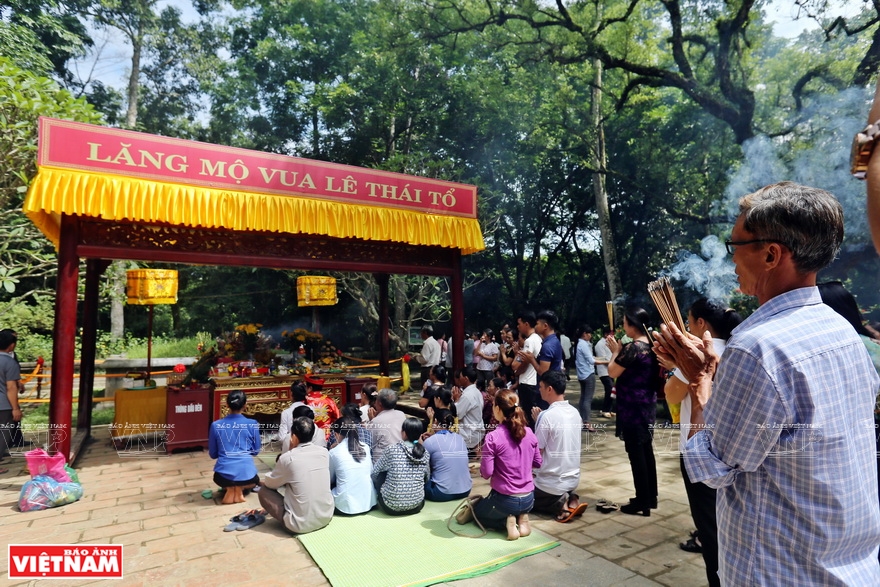The Lam Kinh area in Tho Xuan district, Thanh Hoa, is a special national relic that has kept mysterious tales about the most flourishing feudal reign in Vietnam’s history.
Lam Kinh was originally Lam Son, the homeland of national hero Le Loi (1385-1433). He led the Lam Son uprising to fight the Chinese Ming invaders (1418-1428). Le Loi came to the throne in 1428 and was given the title Le Thai To, becoming the first king of the later Le dynasty. In 1430, Le Thai To renamed Lam Son as Lam Kinh (alias Tay Kinh) and built royal temples and tombs there. Kings of the Le dynasty (1428-1788) annually made a pilgrimage from Thang Long citadel to Lam Kinh to pay tribute to their ancestors.
Lam Kinh has the tombs of the kings of the Le dynasty, including Huu Lang - the tomb of King Le Thai Tong; Lang Khon Nguyen,- the tomb of Queen Ngo Thi Ngoc Giao, (mother of King Le Thanh Tong); Chieu Lang- King Le Thanh Tong; Du Lang- King Le Hien Tong; and Kinh Lang-King Le Tuc Tong. Each tomb has its own architecture and different flanking statues. Particularly, the tomb of Queen Ngo Thi Ngoc Giao is flanked by women statues.
|
Lam Kinh was built with “a mountain in the back and a river in the front”, which is regarded as a golden position in oriental geomancy. Lam Kinh has Dau mountain in the back to the north, Huong and Ham Rong mountains to the west, and Phu Lam forest to the east. It faces the Chu River to the south with Chua mountain as a screen. The site includes the southern gate, dragon royal court, central sanctum and royal ancestral temple.

The 200-ha Lam Kinh historical site is the location of the Tay Son uprising against Chinese Ming invaders led by Le Loi.
Le Loi came to the throne in 1428 and named the country Dai Viet. Photo: Cong Dat

Bach (Tien Loan Kieu) bridge over the Ngoc River is located at the main entrance to Lam Kinh central sanctum. Photo: Thanh Giang

The well near Bach bridge has clear water all year round and used to be the water source for Lam Kinh. Photo: Cong Dat

Visitors should go through the southern gate to enter the central sanctum. Photo: Thanh Giang

The historical site attracts a lot of visitors. Photo: Cong Dat

Paying tribute to King Le Thai To. Photo: Thanh Giang |
Lam Kinh attracts local and foreign visitors not only for its original oriental architecture but mysterious legends about the tombs of the kings of the Le dynasty.
Vinh Lang, the tomb of King Le Thai To, was built on a flat area with Dau mountain at its back, two mountain ranges on the left and right, and Chua mountain as the screen.
At this tomb, there is a mysterious “laughing” guava tree. When visitors gently tickle the trunk, the whole tree would shake as if there were a strong wind blowing through it. It is also believed that visitors will feel relaxed and calm holding the tree branches while closing their eyes.

Mock-up of Lam Kinh historical site in the showroom. Photo: Thanh Giang

The tomb of King Le Thai To has two centuries-old stone elephants. Photo: Cong Dat

The site has many steles, the most remarkable of which is Vinh Lang. Photo: Thanh Giang

At the showroom of the historical site. Photo: Cong Dat

The former foundation used to build Bach bridge. Photo: Thanh Giang

Many artifacts from Lam Kinh are displayed. Photo: Thanh Giang

Tea sets from the Le dynasty, 15th-16th centuries. Photo: Thanh Giang

Brass teapots collected in Lam Son, Tho Xuan district in 2011. Photo: Thanh Giang

Lotus-patterned incense burners, 15th century. Photo: Thanh Giang

A fig leaf-shaped brick found in 1999 at Lam Kinh central sanctum. Photo: Cong Dat |
In the tomb area, there is also a 600-year-old ironwood tree, the tallest tree in Lam Kinh forest. The tree was said to shed all its leaves in 2010 after a project to reproduce Lam Kinh’s central sanctum was approved. The tree was believed to carry the mission of replicating the palace for future generations because its trunk and branches were enough to make a set of props for the building, including the main, sub and corner props. The diameter of the trunk at the root coincidentally had the same size of the main prop (0.8m) while that at the top has the exact size of the sub prop (0.6m).
Lam Kinh, where Le Loi, national hero Le Lai and other kings of the Le dynasty are worshipped, is an original imperial temple of the Le dynasty and the historic location of the Tay Son uprising. It was recognized as a national historical relic in 1962 and a special national relic in 2013./.
Story: Thao Vy Photos: Cong Dat – Thanh Giang